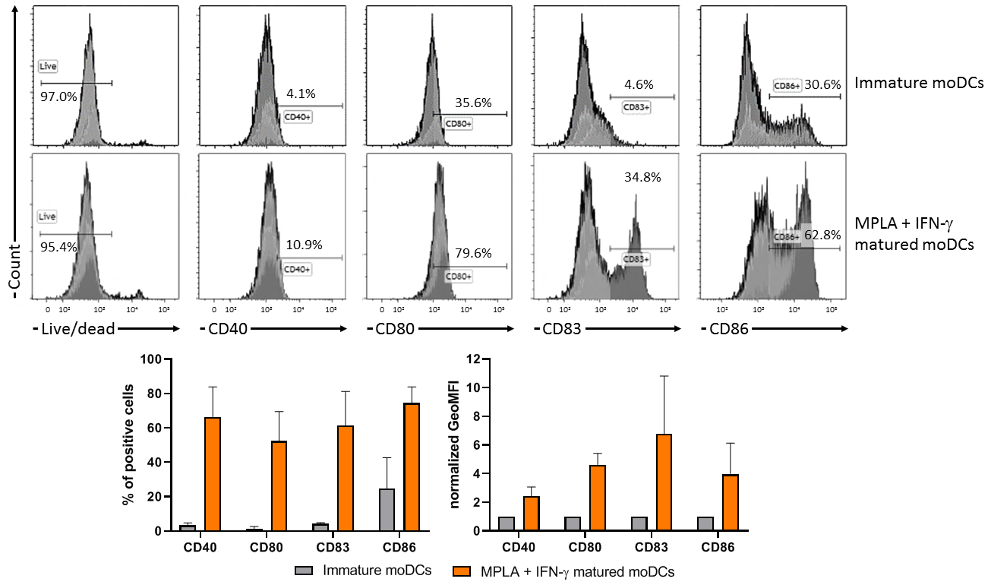
Immune cell activation and differentiation
Studying immune cell activation and differentiation can help unravel the effects of immunomodulatory compounds on lymphocyte subsets.
For example, monoclonal antibody therapies targeting cytokines, cytokine receptors or proteins expressed on cellular membranes (such as CD markers) can have a broad range of effects on the immune system. These effects can be studied in vitro by analyzing various leukocyte subsets, such as monocyte differentiation into macrophages or dendritic cells, CD4+ T cell skewing into different helper subsets or NK cell activation.
Examples of immune cell activation and differentiation
In vitro monocyte skewing in a mixed lymphocyte reaction (MLR)
PBMCs from two/three healthy donors have been co-cultured to elicit an allogeneic response in a MLR in the presence of a biologic. The biologic that was added inhibits T cell proliferation. To determine a possible mechanism of action to explain this effect, macrophage differentiation was measured by studying CD14 and CD206 expression, typically used to define regulatory macrophages, on HLA-DR+ cells after a MLR. Left, dot plot of a representative donor, right compilation of all donors.
Generation of monocyte-derived dendritic cells (moDCs)
 CD14+ monocytes were isolated from three buffy coats from healthy donors via magnetic cell sorting. Monocytes were cultured for 7 days in the presence of IL-4 and GM-CSF and then matured for 2 days with MPLA + IFN-γ. Generation of moDCs was assessed by determining the upregulation of CD40, CD80, CD83 and CD86 via flow cytometry. Up, representative histograms from one donor. Down, data from three donors from 1 representative experiment detailing percentage of positive cells and the geoMFI of matured moDCs normalized to immature moDCs. These cells were subsequently used to present antigen to T cells, which was assessed via a proliferation assay.
CD14+ monocytes were isolated from three buffy coats from healthy donors via magnetic cell sorting. Monocytes were cultured for 7 days in the presence of IL-4 and GM-CSF and then matured for 2 days with MPLA + IFN-γ. Generation of moDCs was assessed by determining the upregulation of CD40, CD80, CD83 and CD86 via flow cytometry. Up, representative histograms from one donor. Down, data from three donors from 1 representative experiment detailing percentage of positive cells and the geoMFI of matured moDCs normalized to immature moDCs. These cells were subsequently used to present antigen to T cells, which was assessed via a proliferation assay.

